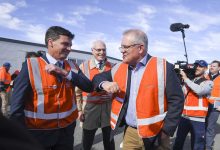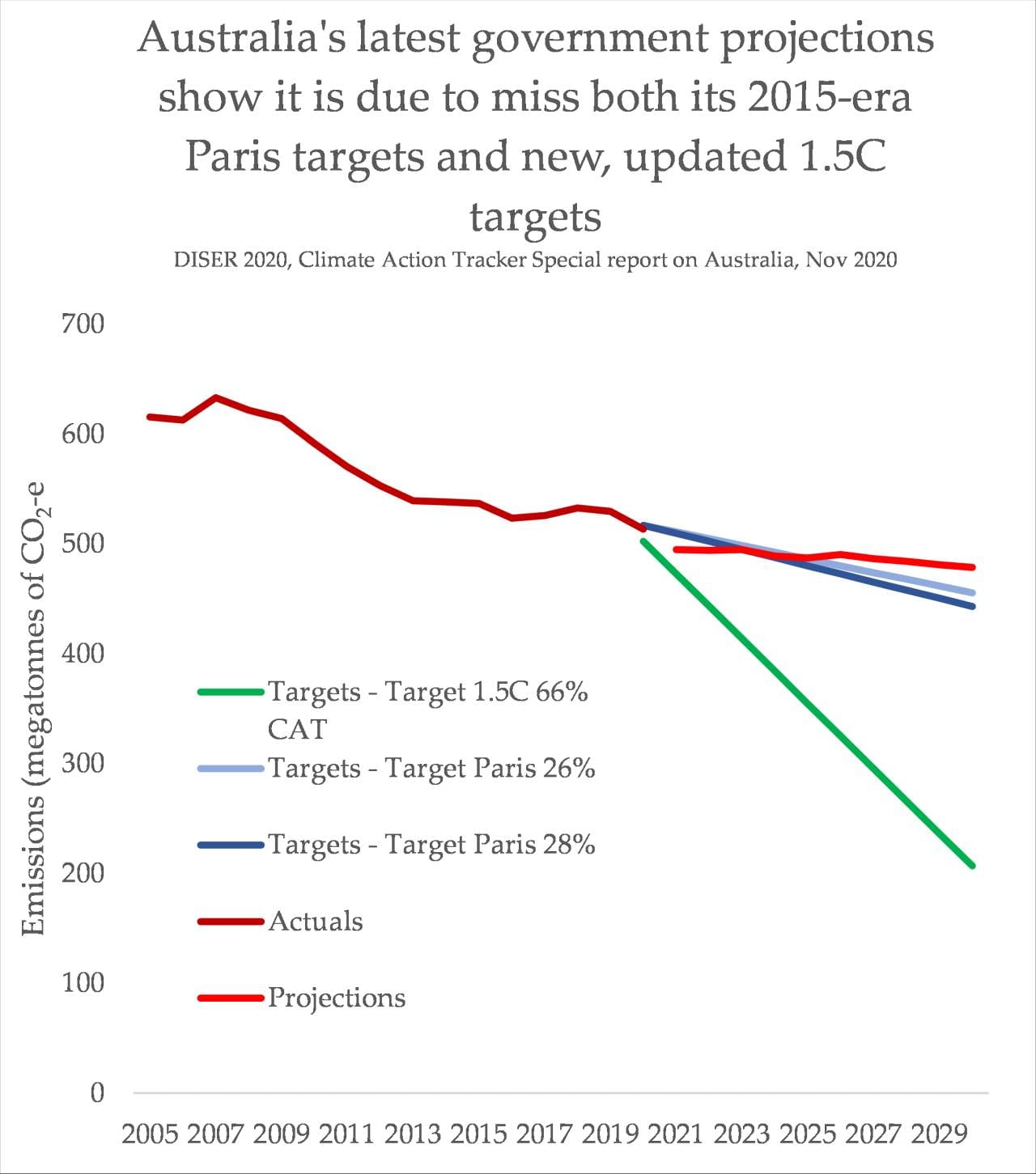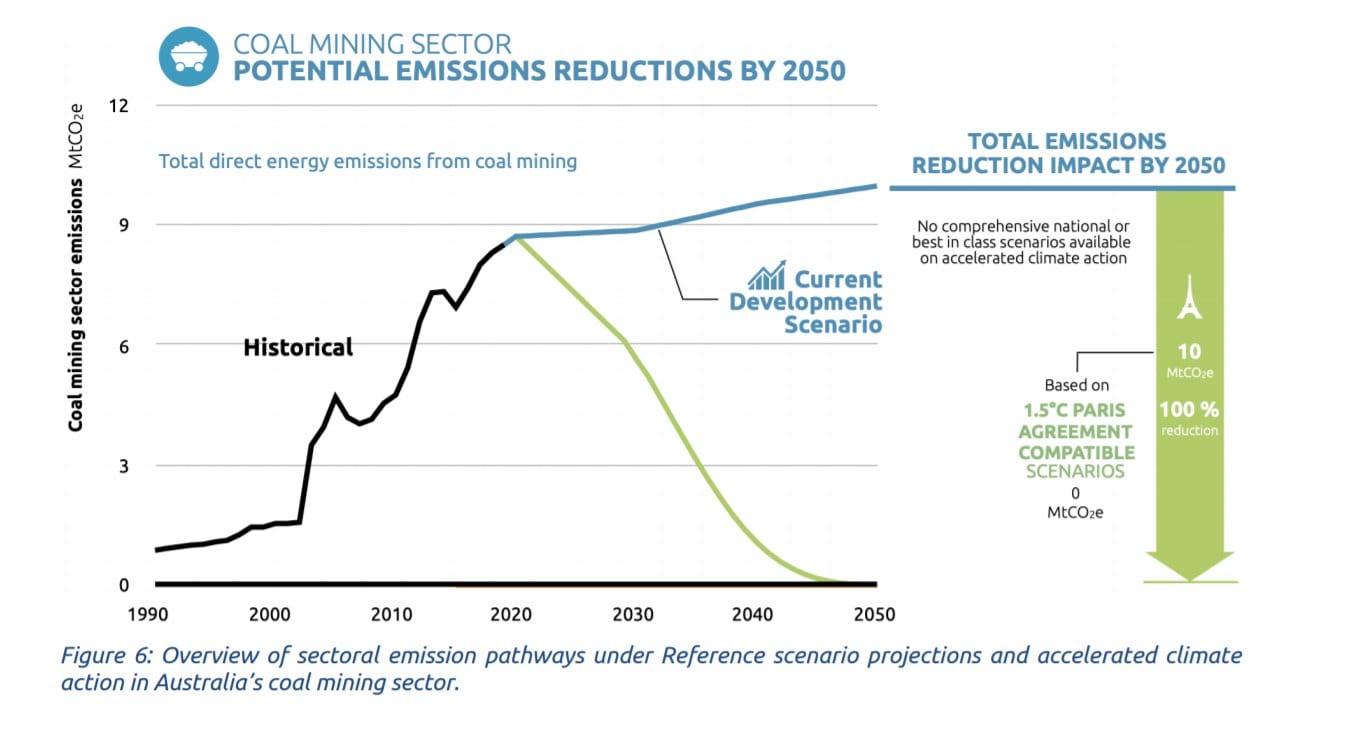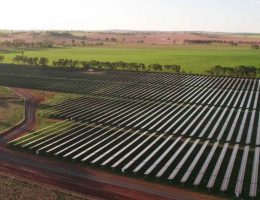Australia’s 2030 Paris Agreement targets are painfully weak. They’re badly insufficient to align to the country with what’s required for global climate action. Currently, they target a reduction of 26-28% by the year 2030, based off 2005 levels of emissions. In fact, setting weak targets and then bragging about achieving them is a very Liberal-National party approach to climate action, and has been the way for some time.
The government already has two key advantages it can use: the Labor party’s Renewable Energy target scheme, which boosted renewables growth and will contribute a significant portion of Australia’s emissions reductions; and the inclusion of a controversial land use category in which emissions from industry and transport can continue to rise while numbers are fudged around the removal (or non-removal) of trees and grasslands.
Even though the standards for Australia’s 2030 targets are so amazingly low, the latest projections from Australia’s government actually still show Australia is set to miss those targets. I dug deep into this last year, and even though Australia’s projected emissions have crept ever closer to the weak Paris targets (thanks to a combination of COVID19 impacts and renewable energy growth), they actually still miss (and of course remains far away from strong, 1.5C targets).
The main reason this is important is because Australia’s prime minister continues to insist the exact opposite – that Australia is on track to meet its targets. This has been going on for some time, even when the gap between those lines was bigger.
It came up again on Wednesday, when PM Scott Morrison was asked about the federal government’s funding of a feasibility study into a new coal-fired power station in Queensland. “In terms of Collinsville, we have money on the table and we are looking to get that feasibility study put together through the proponent. And the feasibility study will determine whether that project is feasible or not. And then we can work our way through any follow up process”, said Minister Keith Pitt.
In that same interview, Morrison insisted in the space of a couple of minutes, that:
- “See we’re meeting our emissions reduction targets, we’re meeting them and we’re beating them”
- “We’ll continue to use technology to ensure we meet our commitments around emissions”
- ” We’re going to meet and beat them”
- “We’re going to beat them”
- “We’re going to meet and beat them”
- “We’re going to keep running the country and we’re going to keep running mines. These things are I mean, the project you’re talking about in the grand scale of energy production, it’s not a very big project. And so, no I don’t think that will have any impact because we’re going to meet and beat our targets”
- “We’re going to meet it and we’re going to beat it just like we did 2020”
- “We’ll meet our Paris targets in 2030”
In an exchange that follows, a journalist insists that the modelling of emissions predicts a reduction of only 22% by the year 2030, as opposed to the required 26-28%.
Journalist: But what’s the evidence you’ve got for that?
Prime Minister: The modelling that has been done.
Journalist: And can you release that modelling?
Prime Minister: You’ve already got it.
Journalist: The official modelling, of the government says 22 per cent.
Prime Minister: No, I think you might be looking at the wrong set of numbers
Whoever that journalist was, they were absolutely correct. The 2020 emissions projections from Morrison’s own environment department predict that total emissions in the year 2030 will be 478.477 megatonnes of CO2 equivalent. 2005 emissions were 615.489 – therefore the 2030 forecast is for emissions to be 22.3% lower, not the 26% that’s required under the Paris agreement. In that same report, another scenario showed that if Australia sees a strong economic recovery from COVID19, emissions will only be 20% lower than 2005 levels. Keep that in mind over this year, when promises of strong economic recovery dominate the news.
The standard defence applied here is that that projections reports modelled the government’s “Technology Roadmap” policy, and found that under that scenario, the target would indeed be met, thanks to the additional growth of new machines that reduce emissions.
But as I found digging into that data, it isn’t the government’s policy that’s being modelled in that scenario – hence, the careful language in the report itself (the scenario “aligns” with the roadmap, it doesn’t “model” the roadmap). That “high technology” scenario actually includes trends like a massive global acceleration in technological development and a lowering of global costs – obviously, not the result of Morrison’s huge PDF roadmap. In fact, it’s the same scenario used in the 2019 report – with the added bonus that the re-badged 2020 version (sold as a ‘tech roadmap’ model) actually leads to fewer emissions reductions:
The other telling thing in this interview is that it seems Scott Morrison is unaware that mining – both for gas and coal – actually contributes quite significantly to Australia’s domestic emissions footprint. This is before you even consider the climate impact of using the product that Australia sells to the world. As discussed in Climate Action Tracker’s November 2020 report, scaling up climate action in Australia requires addressing emissions from mining.
Coal mining, in particular, has not been recognised for being responsible for a very large proportion of methane emissions. New data is constantly emerging on how emissions from mining operations have been consistently badly underestimated.
New @IEA estimates show that #coal mines leak a similar amount of #methane as oil or gas.
At 40 million tonnes of methane, that’s the same as Japan’s total GHG emissions, or x2.5 Japan’s emissions if looking at short-term (20-years) climate impact.https://t.co/b7eHgOtRnd pic.twitter.com/gFIIgIl3ku
— Ember (@EmberClimate) January 18, 2021
Australia has a very, very long way to go before aligning with the ambition of countries like the US and UK, let alone the successes of regions like Europe.
What we saw in 2020 – a flurry of ramping up of climate action from unlikely sources – is definitely going to accelerate into 2020. Morrison’s embarrassing and dangerous deceptions will only get worse, too — unless the government decides to pivot and become a participant in climate action, rather than a global roadblock. That Morrison marked the moment of Biden rejoining the Paris agreement with a whirlwind tour of oil and gas projects is a very bad sign indeed.













